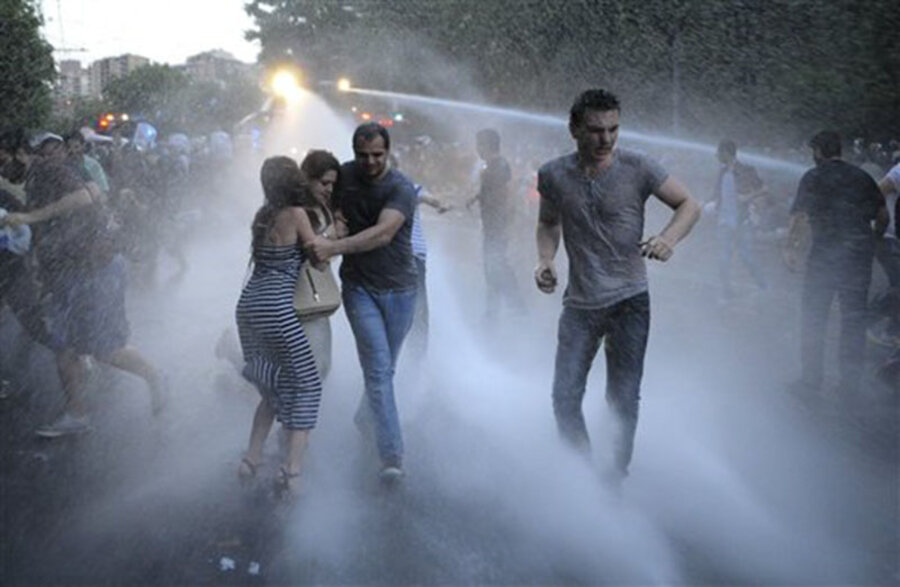Protesters renew march against electricity prices in Armenia
Loading...
| YEREVAN, ARMENIA
Several thousand demonstrators marched toward the presidential residence in the Armenian capital on Tuesday to protest a hike in electricity prices, renewing their demonstration in even greater numbers after riot police used water cannons to forcefully disperse them earlier in the day.
The number of riot police also increased and helmeted officers holding shields stood shoulder-to-shoulder to block the protesters from moving farther down the central avenue in Yerevan.
Police had arrested more than 200 people in dispersing the demonstration early Tuesday, but by the evening an estimated 7,000 protesters had joined the new demonstration.
The unrest was the most serious that Armenia has seen in years, raising concerns about political stability in the impoverished former Soviet nation, which hosts a Russian military base and is part of a Moscow-dominated economic alliance.
Russian companies control some of the most prized economic assets in Armenia, including the power grid. The protest was triggered when an Armenian government commission agreed to raise electricity rates at the request of the power company.
The US Embassy in Yerevan voiced concern about reports of excessive use of force by police and urged the government to investigate them.
On Monday, about 5,000 demonstrators marched toward the presidential headquarters, but were stopped by lines of riot police backed by water cannons. The protesters then sat on the road, blocking traffic and ignoring police demands to leave. They also refused the government's offer to appoint representatives to present their demands to President Serge Sarkisian and demanded that he attend the rally.
Several hundred remained in place overnight. Riot police broke up the protest early Tuesday, using water cannons.
Some protesters resisted and threw rocks at the officers, who responded by beating them with truncheons. Plainclothes police agents also rounded up demonstrators.
Armenian police spokesman Ashot Agaronian said 237 demonstrators were detained and seven demonstrators and 11 police officers were injured.
Police also broke up a small rally in Armenia's second-largest city of Gyumri on Tuesday backing the main protest, arresting 12 people.
The demonstrators were demanding that the government reconsider its decision to increase electricity prices for households by 17-22 percent. Some protesters also called for Sarkisian's resignation.
The opposition Armenian National Congress walked out of parliament in protest Tuesday against the rally's breakup and demanded the release of all those detained.
Raffi Hovannisian, the leader of the opposition Heritage party who challenged Sarkisian in a 2013 presidential election, also denounced the government crackdown on the protest, calling it "a national shame."
Sarkisian, who is serving his second term, has not yet commented on the protest.
The landlocked country's economy is hobbled by the longstanding closure of its borders with Azerbaijan and Turkey over a conflict in the Nagorno-Karabakh region. It depends on close ties with Russia.
Alexander Iskandarian, head of the Caucasus Institute, an independent think tank, said the protest reflected "the radicalization of opposition activities."







